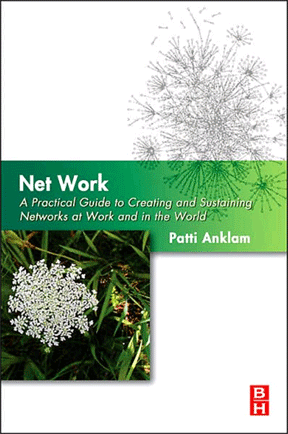I just spoke with Carol Rozwell a few days ago. Carol is a Gartner analyst who has been following social network analysis for almost as long as I have been practicing it. Last year, she and her colleagues published the Market Guide for Social Network Analysis. I have worked with a couple of the companies listed, as well as a few others.
Our conversation was similar to the one we had about 18 months ago: will social/organizational network analysis ever really take off? Rob Cross did so much to popularize it across the business world, and Valdis Krebs has continued to use network analysis in interesting ways. I recently posed a question to the SIKM Leaders Yahoo! group about the use of network analysis and received very sparse response.
Organizational network analysis (ONA) has always seemed like a good idea, and yet … there are have been some real barriers. The tools were, if not arcane, at least not very accessible to the people in organizations who might be the most interested in network analysis - human resources, organizational development, managers themselves. Some of this has changed in the past few years. Companies like Maven7 and Syndio, in particular, have integrated survey and analysis tools into web-based services that take away the pain of mucking around in spreadsheets. For my survey and summary of the various tools available, you might be interested in the deck I posted on SlideShare:
The second problem with the uptake of SNA/ONA is that it is such a hard sell. My successes in generating ONA projects have come in two ways: first, from “believers,” that is people who have read enough or have had enough experience with ONA that they are convinced it will help them. Most of my KM and nonprofit projects are in this first category. In these cases, I worked mainly as a subcontractor — providing the network analysis to consultants who were working a larger problem. Second, I introduced ONA projects as part of my own, larger, projects. The network analysis was a diagnostic introduced as part of a knowledge management assessment and/or strategy project.
A third problem may be with pricing, more specifically, return on investment for the project. In the small sphere in which I provide network analysis for nonprofits who are using network-building as a core strategy, the hourly rate I charge is (I think) very reasonable. In the knowledge management context in which I work, pricing can be more predictable working with the new software companies who publish a pricing model based on the number of respondents. The software companies who are providing network analysis as part of a large-scale system change effort can reasonably charge, based on per-person pricing, in the 10’s of thousands of dollars, but this includes significant consulting work and the development of detailed reports.
I would love to hear from other practitioners about what they are seeing, what has and what has not worked. And of course I am always delighted to hear from anyone who would like to pursue an ONA project in their organization. Have tools, will travel. (or Skype!)


